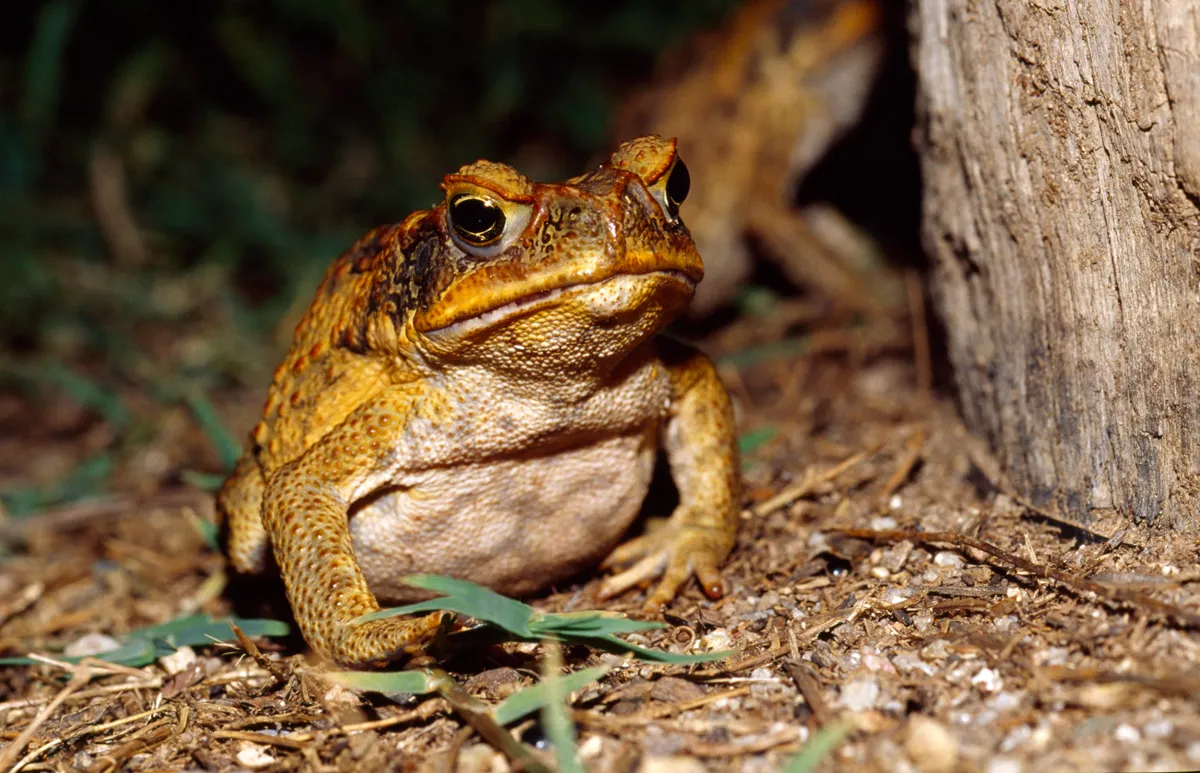An animal in the wrong place at the wrong time can be devastating for an area’s natural ecosystem says Sheena Harvey.
Over the years some alien species have been deliberately imported in a mistaken belief they will solve a local problem with pests or an over-population of native animals.
- Biological pest control: what it is, how it works and what happens if it goes wrong...
- Alien species: What they are and why alien species are such a threat
Others have been unfortunate escapees from private collections or commercial breeding establishments. Yet others have been unwitting hitchhikers on global transport and importation networks.
The fact remains, whether translocated deliberately or by accident, these wildlife immigrants can leave a trail of destruction in their wake by occupying an area where they were never meant to be.
Here are some of the world’s most unwelcome visitors.
World's most invasive species
American minks

This sleek, soft-coated mustelid calls North America home, where bobcats, bald eagles, and coyotes regard it as prey. However, in the 1920s mink were imported into the United Kingdom, where there are none of those large predators.
They were brought to be reared in captivity for their fur, and over the years some occasionally escaped into the wild. These numbers might have been contained but, in the 1960s, protestors mounting direct action against the fur trade unthinkingly released huge numbers into the British countryside. They have been causing havoc ever since, decimating ground-nesting seabirds and driving water voles to the brink of extinction.
Black rats
Not the cuddliest of creatures, black rats nevertheless had their place in the ecosystems of their native India. A small Caribbean island unexpectedly overrun by rats was a different story.
On Redondo, a seabird-rich rock near Antigua, guano mining in the 19th century brought people in ships, complete with stowaway rats. Once landed, the rats had a field day with small reptiles, eggs and chicks. To be fair to the rats, they weren’t the only culprits. The miners also let loose goats.
Together, rats and goats formed a lethal foraging team that reduced Redondo to a barren moonscape. In 2016, environmentalists began eradication and by 2018 the island was rat-free and native species were returning.
Grey squirrels
If you owned a country house in Britain in Victorian times, chances are you collected exotic ornaments to demonstrate wealth and world travel to your equally social climbing peers. What better garden enhancement, then, than an alien animal. The first recorded grey squirrels in England were in 1876.
In the following 50 years there were about 30 other importations. The result was death to the native red squirrel. Greys carry squirrel pox to which they themselves are immune. But the disease ran riot through red squirrel populations and reduced their territories to isolated pockets. Thankfully, reds have gradually built immunity and there’s hope of re-colonisation.
Signal crayfish
During General Franco’s dictatorship in Spain the fishing industry was restricted from accepting foreign catches, which led to overfishing of its seas and rivers. This was followed by a sport fishing boom in the 1950s.
A casualty of this double whammy was the Iberian crayfish, and numbers declined steeply. To maintain a supply of crayfish to markets and restaurants, locals imported American signal crayfish to restock rivers. This proved a disaster for the remaining Iberian population. The larger Americans were carriers of crayfish plagueand their European cousins had no immunity.
Today only a few thousand remain. The signal crayfish is now designated an undesirable alien that cannot be bred or transported in Europe.
Cane toads

Native to Central and South America, these poisonous amphibians proved valuable to farmers because of their liking for the larvae of cane beetles, which damage sugar cane crops.
Plantation owners introduced them as a natural pesticide into Caribbean cane fields in the 1920s. In the early 1930s they were imported into Hawaii for the same purpose and from there to Australia in 1937.
By 2011, the original 101 toads that travelled Down Under had become more than 200 million toads. In parts of Australia they are responsible for poisoning large numbers of native wildlife, domestic pets and even humans. A remedy has yet to befound.
Lionfish

A deadly species found in tropical waters of the South Pacific and Indian Ocean where natural predators cope with their poisonous barbs. Their unfortunate rise in the Caribbean, where nothing is programmed to eat them, has been a disaster for coral reefs.
One of the deadliest animals in the ocean, lionfish feed on smaller fish that graze on algae that would otherwise smother delicate reef organisms. Anecdotally, the explosion of lionfish has been attributed to releases by hobby aquarists around the Gulf of Mexico when their pets outgrow their tanks. Management is trapping and destroying, although attempts are being made to give native predators and local chefs a taste for them.
Asian longhorn beetles

They live in China and Korea in willow, elm and maple trees where they are controlled by local parasites and predators. They arrive in European and North American woodlands, with few natural predators, by hitchhiking in the wood of packing cases and wooden pallets.
All stages of the beetles’ lives spell destruction for the trees. Larvae eat bark and create gaps so nutrients cannot rise from the roots to nourish the tree. To pupate they burrow into the tree, leaving tunnels that weaken the structure and make it vulnerable to strong winds. Emerging adults make large holes, with similar effect. Felling and burning affected trees is the only solution.
Zebra mussels

Tiny zebra mussels wreak devastation by their sheer numbers, filtering volumes of plankton food and causing starvation for other aquatic inhabitants.
They are transported from the Caspian and Black Sea areas to other parts of Europe and the Americas in the freshwater ballast ships carry to keep comfortably afloat. They can also hitch a lift on ships’ hulls and floating vegetation as they have a tolerance for brackish water.
Their population numbers grow very rapidly so once introduced to an area they swiftly increase to block intake pipes and foul boat engines, interfere with sluices and clog waterways. If established, they are almost impossible to get rid of.
Hedgehogs
These cute prickly animals are usually a welcome sight in British gardens because their numbers have been in sharp decline. However, on several Scottish islands, where hedgehogs were previously unknown, they did not distinguish themselves.
Hogs were released in South and North Uist and Benbecula in the 1970s, because islanders thought them an ideal solution for a plague of slugs and snails. Unfortunately, the hedgehogs found another delicious source of food in the eggs of wading birds and were soon badly affecting populations.
The successful non-lethal solution has been for conservationists to trap the hogs and release them in safe locations on the mainland.
Asian hornets

Lethal to honeybees and a thousand other mini-beasts across Europe, the first Asian hornets from Southeast Asia arrived in France in 2004 inside boxes of pottery. They multiplied and spread, first over the rest of France, then Spain and Portugal.
- Meet the deadliest and biggest wasp in the world - complete with its scary 6mm stinger - and learn why it's called the murder hornet
- 66 alien species which could threaten European wildlife
By 2012 they were in parts of Italy and two years later in Germany. By 2016 they had made it to the UK and the Netherlands. Their threat comes from predating pollinators. Their powerful sting is also a hazard to humans, and deaths have been reported in both France and Spain.
Biocontrol methods are employed to deal with them, including the parasitic larvae of a fly that prevents queens from colonising.
Hippos

An extreme example of the consequences of carelessness. In the 1970s, notorious South American drug baron, Pablo Escobar, created a private menagerie on his estate in Colombia. Four hippopotamuses happily lived confined in his grounds. But after Escobar’s death in 1993, no one dared round up fully grown and uncooperative hippos, so they were left to forage.
By 2007 there were 16 at large and in 2019 an estimated 120. Their effect on the ecosystem has been to consume vast amounts of vegetation and displace several native species – spectacled caimen, neotropical otters, West Indian manatees – important to healthy biodiversity. A strategy of sterilisation and translocation is currently being considered.
